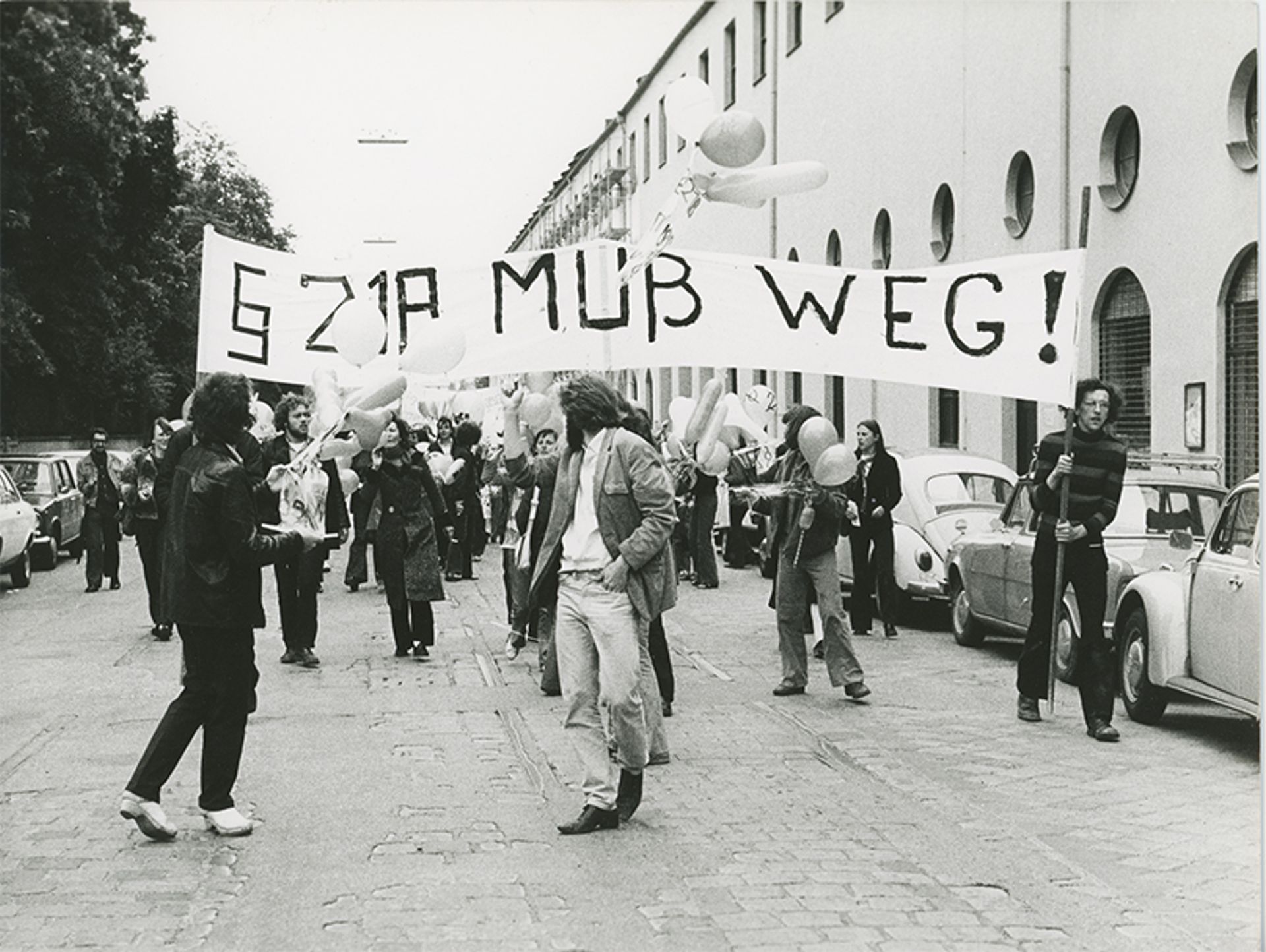Institution anniversaries can be a boring, self-satisfied affair. But instead of focusing on past glories for its bicentenary, Munich’s Kunstverein sheds a critical and ruthless light on its turbulent history by opening archives that have remained untouched for decades.
It would be easy to focus on the successes of the association, founded by three artists on November 26, 1823, as a platform for contemporary art. The list of artists who have exhibited there over the decades is an extraordinary Who’s Who: among those whose last name begins with the letter B, there are, for example, Georg Baselitz, Jean Michel Basquiat, Bernd and Hilla Becher, Joseph Beuys, Arnold Böcklin, Pierre Bonnard and Louise Bourgeois.
But that would mean going through some dark chapters, especially the years before, during and after Adolf Hitler’s reign. In 1936, the Kunstverein in Munich had excluded “non-Aryan” artists from its membership, explains Maurin Dietrich, director of the Kunstverein since 2019. “We are still looking for a list of Jewish members, we know there were hundreds of them” , she says. . Disturbingly, this list is missing from the Kunstverein’s own archives, “so we cross-check with other archives,” she says.
Institutions will soon display its archives in a constantly rotating exhibition called Archives like… (May 27-August 27). Artists, theoreticians, art historians and former members of the team will devote themselves to different aspects of the subject, according to their own fields of research. The aim, according to the Kunstverein, is to “negotiate with and in public the question of the constitution of stories”. A showcase in the Kunstverein features a changing selection of documents, a work designed by artist Julian Göthe.

Maurin Dietrich, director of the Kunstverein Munich
Courtesy of Kunstverein Munich
While most German museums have at least begun to investigate their past, few of Germany’s 300 Kunstvereine or art associations have taken this step. Dietrich says this is partly because the Kunstvereine are “defined by the idea of the new, the contemporary and the avant-garde”. They do not have their own collections and therefore are not exposed to pressure on museums to conduct provenance research.
Munich’s Kunstverein began investigating his past more than three years ago, opening boxes of documents that had remained untouched for decades in the attic and basement. A further 62 meters of archival material has been stored in the Munich City Archives. Artist Bea Schlingelhoff confronted the Kunstverein with her history in a 2021 exhibition titled No river to cross. She formulated a text for the statutes of the Kunstverein, in which he “asks forgiveness for his collaboration with the Nazi regime and the Reich Chamber of Culture”.
The Kunstverein has now secured funding for a permanent archivist position, Dietrich says. “A lot of work has been done, but in a way we’re just getting started,” she says. “There is so much to do.”
When the Kunstverein was founded, there was no market or exhibition space for contemporary art in Munich – the only museum was what is now the Alte Pinakothek. The new art club was so successful that Crown Prince Ludwig became its principal patron in 1825. It had over 6,000 members at its peak (compared to 1,900 today). Women were allowed to join from 1829 – however they were not allowed to participate in membership votes until 1902. It was the only institution selling art in the city until the end of the 19th century, when shopping malls began to appear.
But during the years of the Weimar Republic, a time when arts and culture flourished in Germany, Munich’s Kunstverein and its former leaders became more reactionary in outlook. After the seizure of power by Adolf Hitler, the association adopted Nazi policy.
“The fact that the association has freed itself from all that is justly called ‘degenerate’ art is cause for justifiable pride,” read a 1936 Kunstverein report. no difficulty in swearing cheerful allegiance to the principles established by the Third Reich for the culture of German art.”
The Kunstverein building was destroyed during the war. It moved to the site where it still stands today, the arcades of the Hofgarten, to three of the seven galleries where the infamous shameful “Degenerate Art” exhibition commissioned by Hitler’s propaganda minister, Joseph Goebbels, took place. took place in 1937.

Meeting of German women’s emancipation groups at the Kunstverein Munich, February 10–11, 1973
Courtesy of Kunstverein Munich
By the 1970s, the Kunstverein was again at the forefront of contemporary art, presenting political exhibitions critical of the establishment. In an exhibition, students from the Academy of Fine Arts in Munich examined the case of Hermann Kaspar, an artist who completed commissions for the Nazis but remained a professor at the academy until the 1970s. purpose was to critique the institutional failure to break with the Nazi past. The Bavarian Ministry of Culture threatened to cut off funding for the Kunstverein and the show closed prematurely.
Jubilee celebrations will also include more conventional festivities: on the weekend of June 30, there is a public party and dinner for patrons and artists in the arcades of the Hofgarten. Shade Théret, Magdalena Mitterhofer, Luisa Fernanda Alfonso and Jan Kunkel will give a series of performances. The first publication devoted to the institution and its history will also appear in June, 200 years of the Kunstverein München.
More information can be found here.
